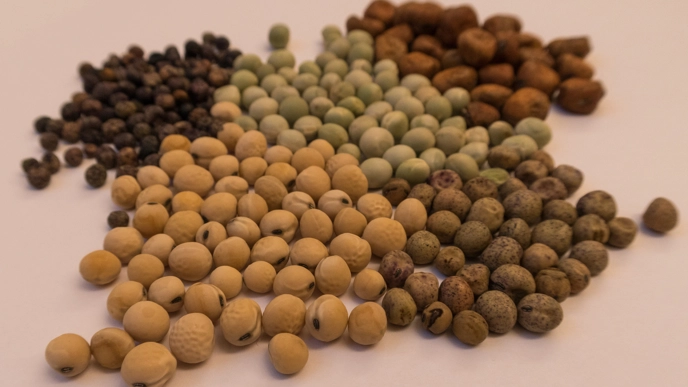
Pea - the key for future green protein - phase 2
Project overview
Participants
More related research
Short summary
The aim of the project is to develop pea varieties suited to Swedish growing conditions with high quality, to promote seed quality and cooking properties, and to reduce the antinutritional traits of the pea varieties.
The growing awareness of the climate impact of diets high in animal protein, combined with the desire to reduce our dependence on imported soy, has created a strong demand for Swedish-grown plant-based protein for both feed and food applications. Increasing the cultivation of legumes, such as peas and beans, has been identified in numerous international reports as a key component in achieving sustainable food production in the future.
Peas have a long tradition of cultivation in Sweden, but many of the varieties currently available on the market lack important traits that are in demand today. To meet future needs, modern pea breeding must focus on both increased productivity and improved raw material quality. This project will establish a new breeding programme for three pea types: feed peas, cooking peas (yellow peas, field peas), and industrial peas (canning peas, garden peas). It will create the conditions necessary to develop new pea varieties adapted to Swedish growing conditions in a cost- and time-efficient manner using modern plant breeding methods.
Higher yields and climate-stable quality are traits that are in focus and prioritised by the breeding industry. Climate-stable quality involves earliness and timing of maturity as well as tolerance towards waterlogging and drought. One important objective of the project is to expand the use of peas in different food applications, which for instance will be done by evaluating what type of pea is most suitable as raw material for protein concentrates and protein isolates, as well as identifying limiting antinutritional agents. For dry yellow pea, there is a focus on cookability, which is related to starch and fibre content. For fresh green pea, a well-defined variation in maturity time is desirable.
The project will deliver new plant breeding tools for pea by developing DNA-based precision markers and new phenotyping protocols for the prioritised traits. This will provide requisites for the industry to establish a marker-based breeding programme for pea to speed up the development of new cultivars. Hence, the project will facilitate a transition from a conventional phenotype-based breeding programme to a more efficient genotype-based programme that uses modern breeding tools such as marker-based selection and genomic prediction. This transition is crucial for future competitive cultivar development with an expanding and sustainable pea production in Sweden.
The project will deliver:
- New breeding programmes for feed, cooking, and industrial peas
- A pea germplasm collection composed of cultivars, landraces and gene bank accessions that will provide the breeding programmes with genetic variation and potential parents for crossings
- Genomic tools and precision markers for pea
- Phenotyping methods for water congestion and drought stress
- Identification of breeding targets for quality traits
- Research-related education and scientific publications
Participating organisations: SLU, Foodhills, Kalmar Ölands Trädgårdsprodukter and Lantmännen.